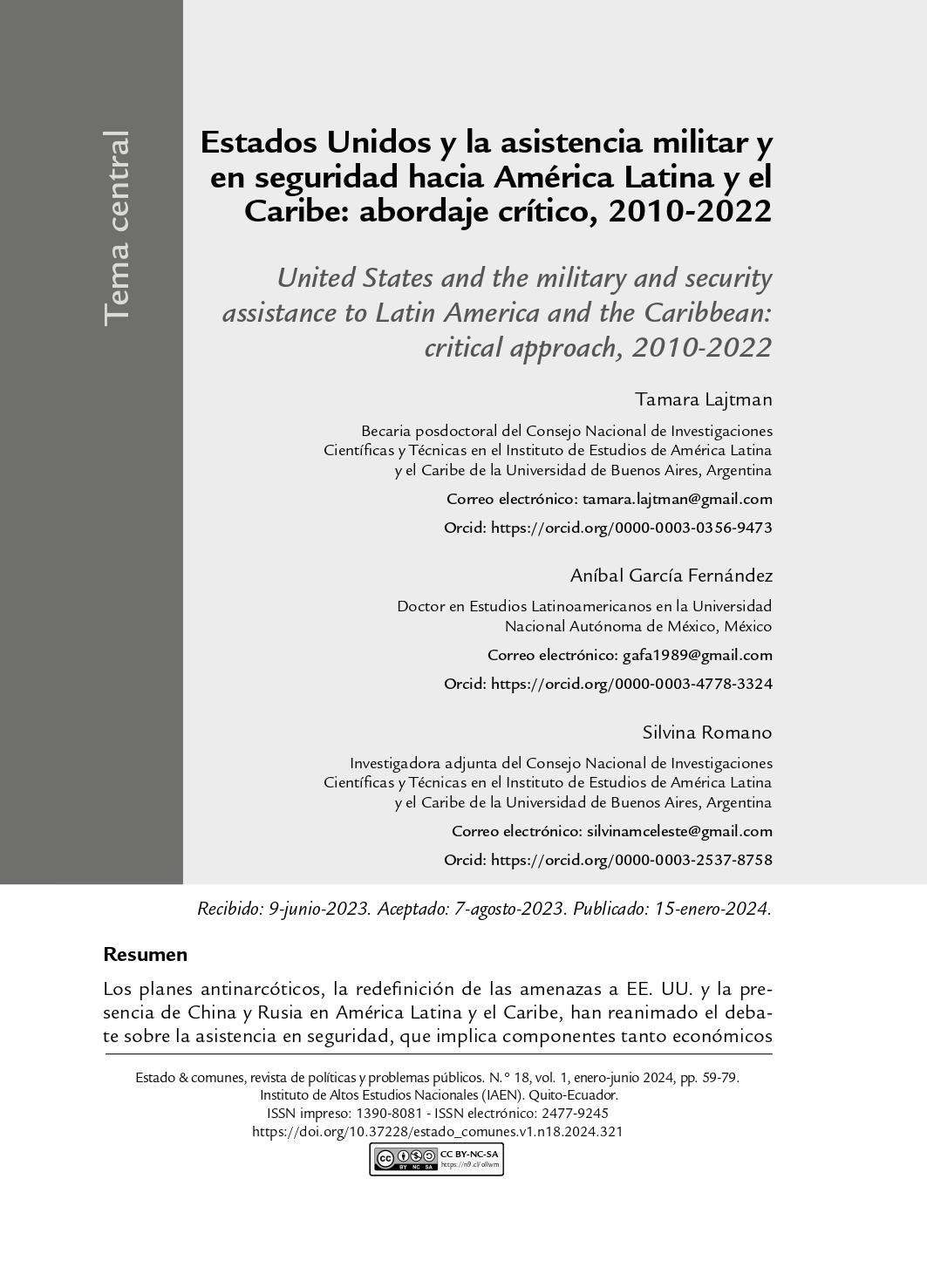Estados Unidos y la asistencia militar y en seguridad hacia América Latina y el Caribe: abordaje crítico, 2010-2022
Contenido principal del artículo
Resumen
Los planes antinarcóticos, la redefinición de las amenazas a EE. UU. y la presencia de China y Rusia en América Latina y el Caribe, han reanimado el debate sobre la asistencia en seguridad, que implica componentes tanto económicos como militares. Diversos actores y el Gobierno estadounidense alegan resultados “fallidos” de la guerra contra el narcotráfico y sugieren aumentar el rubro de dicha asistencia. Este artículo revisa la definición y el modo en que el Gobierno, la academia y laboratorios de pensamiento distinguen el apoyo militar del económico. Los datos oficiales de 2010-2022 arrojan que un 90 % de la asistencia exterior correspondería a la asistencia económica y solo un 10 % a la militar. Para contrastar esta información, se propone la reclasificación de los rubros de la asistencia mediante un análisis crítico que arroja resultados diferentes en el que en el mismo período la asistencia en seguridad asciende al 35 % del total. Esto es un indicio del modo sistemático, a lo largo de diferentes administraciones estadounidenses, en que los bienes y servicios de seguridad tienden a ser ubicados en programas de seguridad no militares, como parte de la asistencia económica, cuando por origen y objetivos, se corresponden con el ámbito militar.
Descargas
Detalles del artículo
Cómo citar
Número
Licencia
Derechos de autor 2024 Tamara Lajtman, Aníbal García Fernández , Silvina Romano











